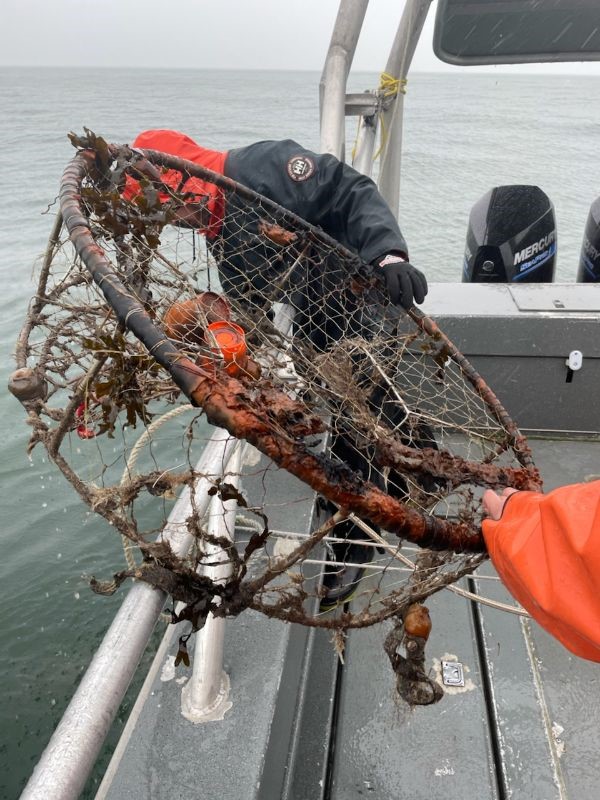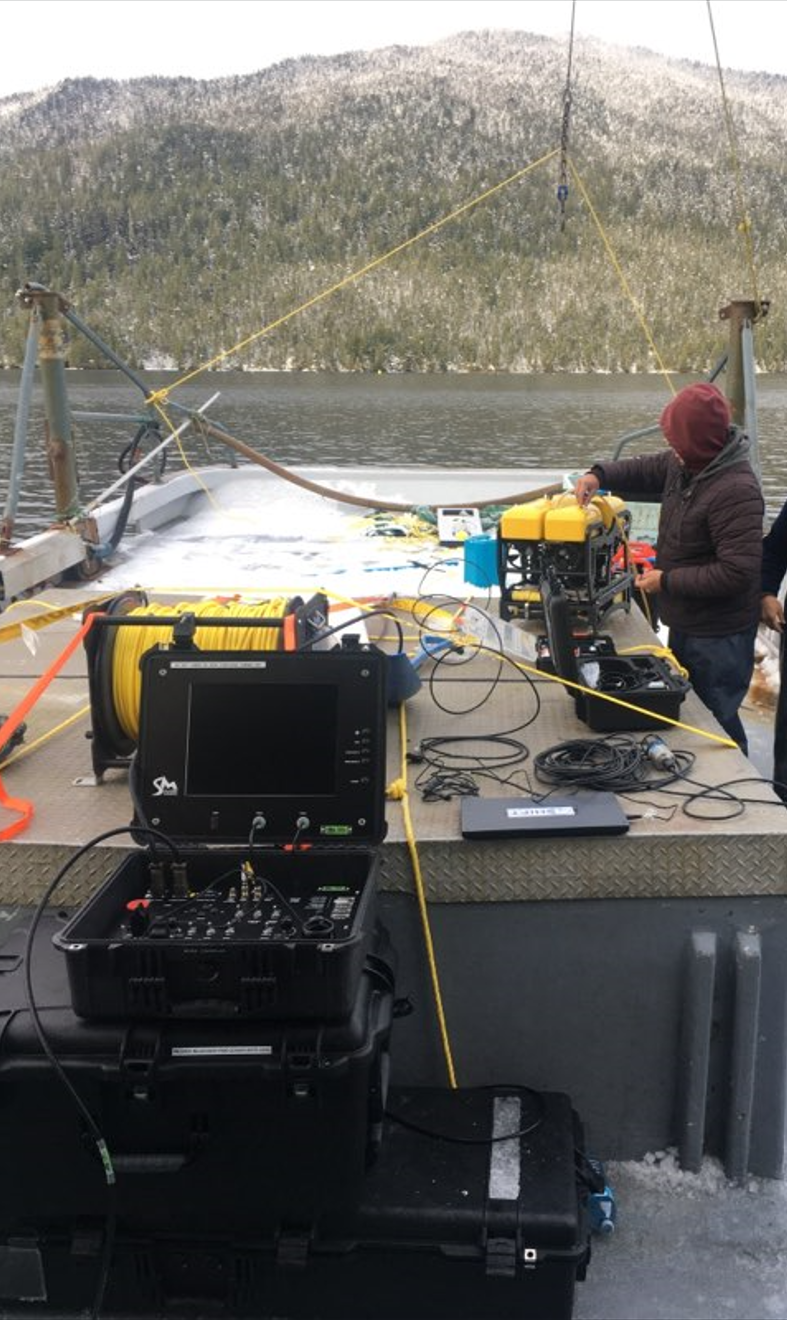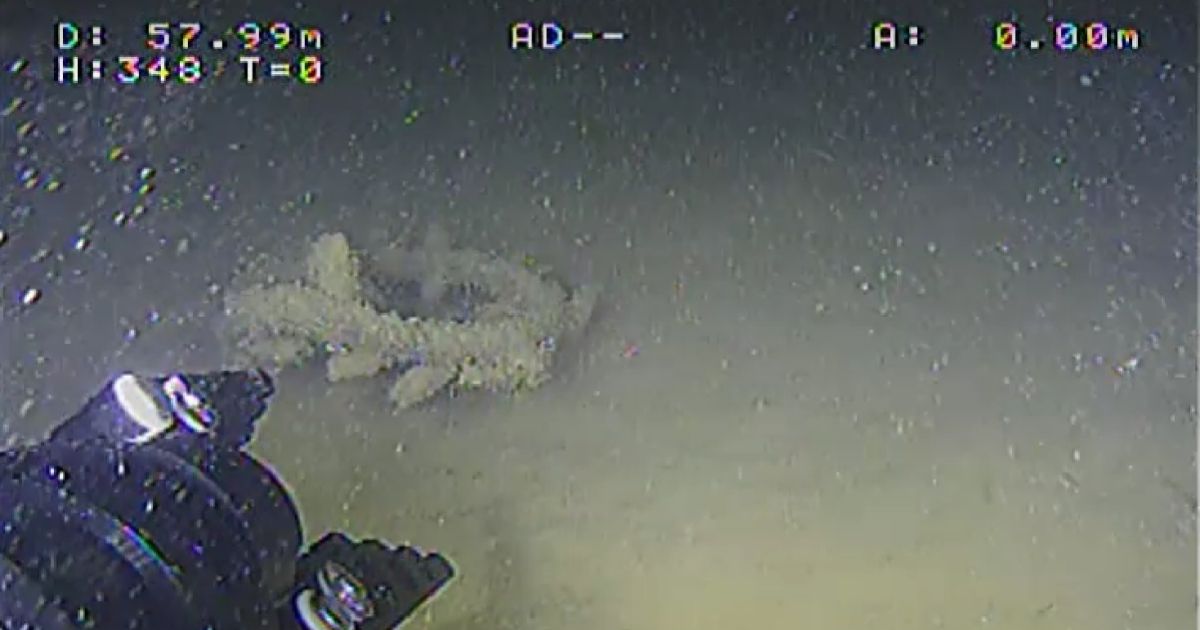SEAMOR Chinook ROV retrieves “ghost gear” debris from ecologically sensitive fishing grounds in Lax Kw’alaams traditional marine territory in Western Canada
 A trap being retrieved onto a vessel near Prince Rupert, British Columbia. Photo Credit: SEAMOR Marine.
A trap being retrieved onto a vessel near Prince Rupert, British Columbia. Photo Credit: SEAMOR Marine.
This spring, using the SEAMOR Chinook ROV, Lax Kw’alaams Fishing Enterprises (LKFE) and Shift Environmental Technologies (Shift) retrieved 630 kg of lost and abandoned fishing gear or “ghost gear” from the traditional marine territory of the Lax Kw’alaams First Nation in Prince Rupert, BC, Canada. Ghost gear has the potential to entangle fish, marine mammals, and birds, as well as damage habitats and boats in ecologically sensitive fishing areas. Globally, ghost gear causes severe environmental and economic consequences. The two-year project was made possible by funding from the Canadian government’s Ghost Gear Fund, First Nations Solid Waste Management Initiative, and the T. Buck Suzuki Environmental Foundation.
“It’s exciting to see that ghost gear removal in Indigenous marine territories is a government priority,” says Robin Li, President of SEAMOR Marine. “We’re proud that our Chinook ROV played an integral role to retrieve and dispose of the gear responsibly as well as develop best practices and provide ghost gear data for future recovery operations. The Lax Kw’alaams community relies on their marine environment, so it’s imperative to keep these ecosystems clean and healthy.”
LKFE and Shift first surveyed the area and mapped ghost gear concentrations. To retrieve the abandoned crab pots from these remote areas, the team deployed a SEAMOR Chinook ROV with a twist-pair tether and an assortment of modular attachments. The ROV’s Blueview P900-45 multi beam sonar and Blueprint SeaTrac lightweight USBL acoustic positioning system helped locate the debris in low visibility conditions.
 The SEAMOR Chinook ROV being prepared for deployment at sea. Photo Credit: SEAMOR Marine.
The SEAMOR Chinook ROV being prepared for deployment at sea. Photo Credit: SEAMOR Marine.
The Chinook ROV ended up truthing the sonar data. The most successful method was to find strings of crab pots using a towed or hull-mounted side-scan sonar, then revisit those spots with the ROV and get video footage of the target. The ROV footage confirmed that the debris was crab pots, helped determine whether it was retrievable, and identified the locations of the terminal ends of the string. Then a grapple was dragged through the locations of the terminal ends for retrieval.
Port Edward Harbour Authority provided cleaning and storage facilities for the retrieved gear.
“The assets and training acquired through the ghost gear retrieval program assist the Lax Kw’alaams fishing community to continue retrievals for years to come,” says James Spencer, Founder and CEO of Shift Environmental Technologies. “That, in turn, provides economic and environmental benefits into the future and supports Indigenous-led coastal resource management.” SEAMOR’s ROVs are deployed in environmental projects around the globe, and the company’s staff supports sustainability locally.
“We hold a deep respect for our oceans and the diverse marine life that calls them home,” says Li. “Our ROVs are proudly implemented in environmental projects worldwide, while our team works locally, participating in community beach cleanup efforts that work toward building an eco-sustainable future.”
Based in Nanaimo, British Columbia on Vancouver Island on Canada’s west coast, SEAMOR Marine Ltd. designs and manufactures underwater observation and inspection-class remotely operated vehicles (ROVs) and modular accessories. SEAMOR sells worldwide and has ROVs operating on every continent and in every major body of water around the globe. The company’s ROVs have been used in a variety of fields including aquaculture, underwater archaeology, Antarctic geology, and pipeline and dam inspection. SEAMOR has collaborated on research projects with NASA, the Defense Research and Development Canada, and the Department of Fisheries and Oceans.



